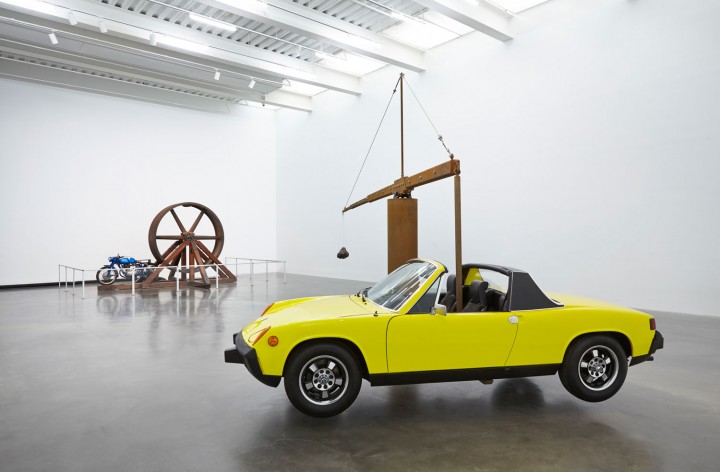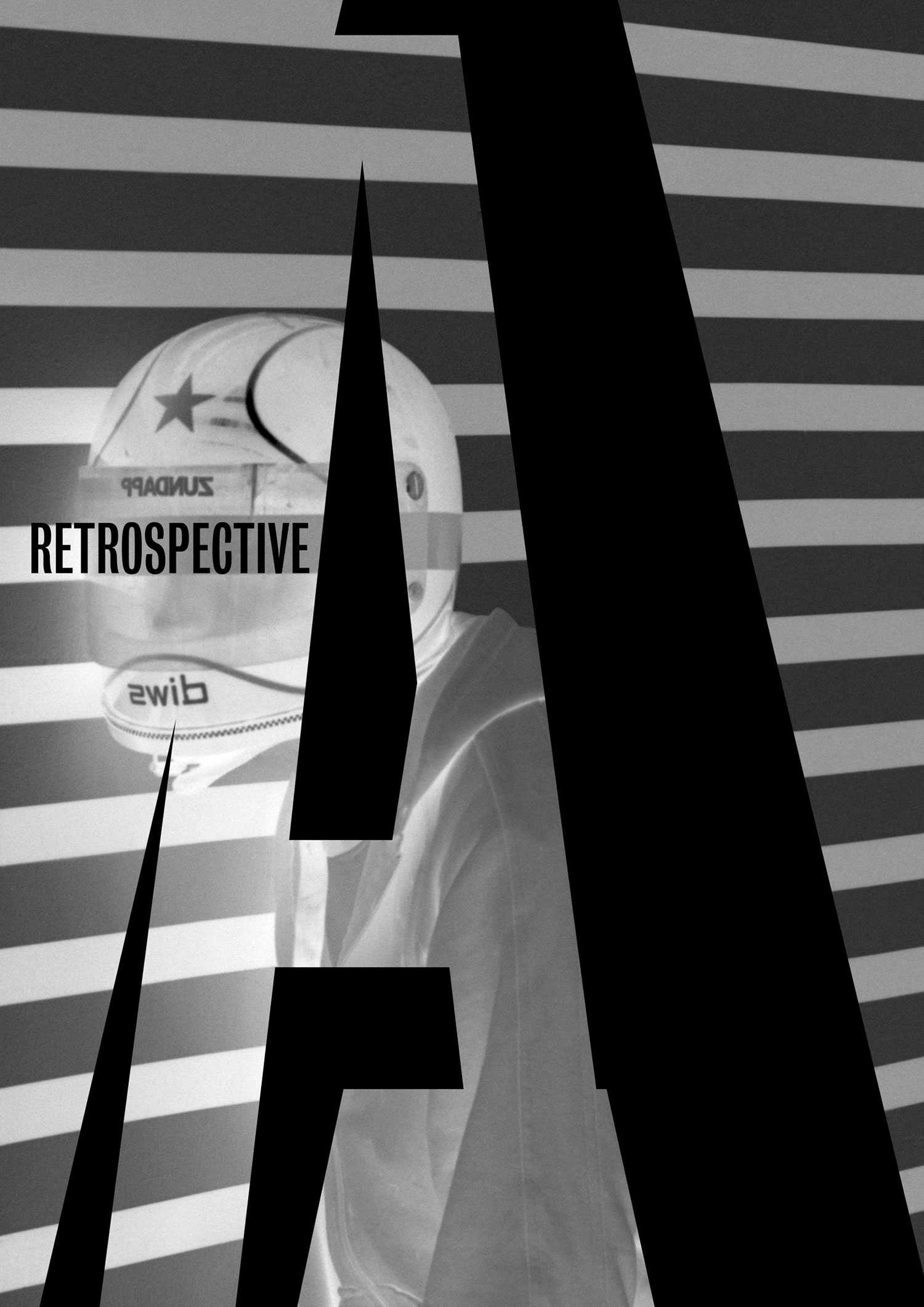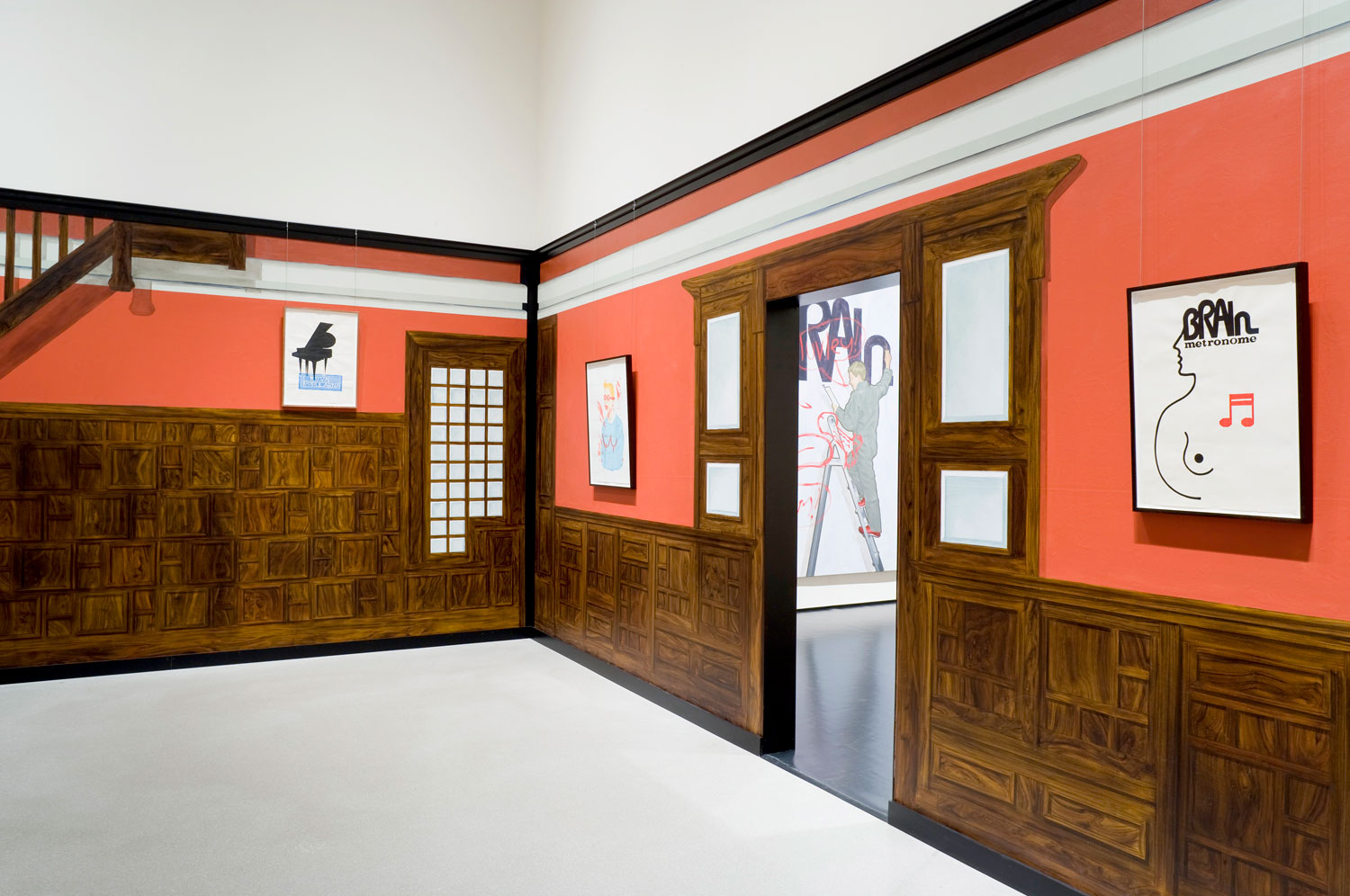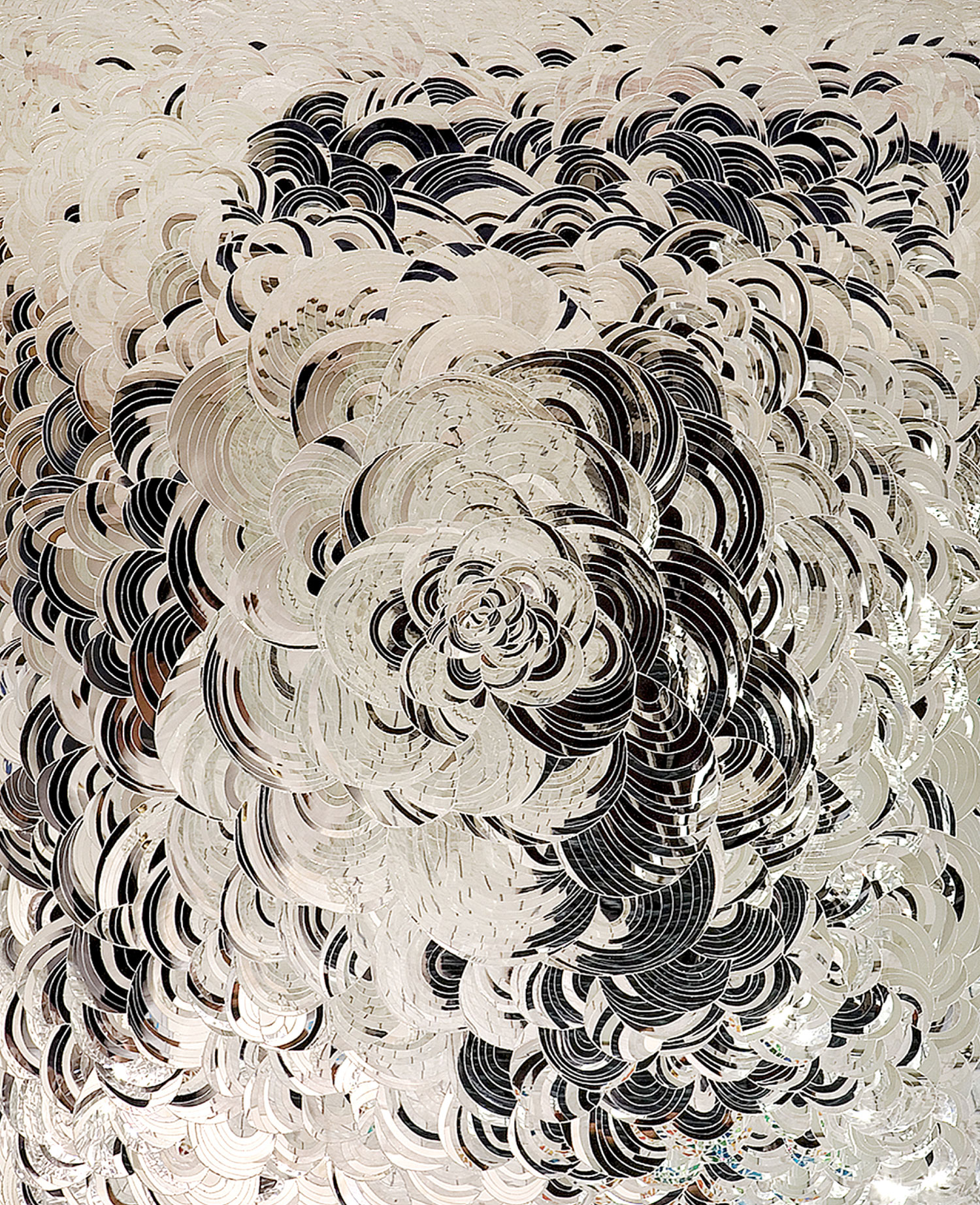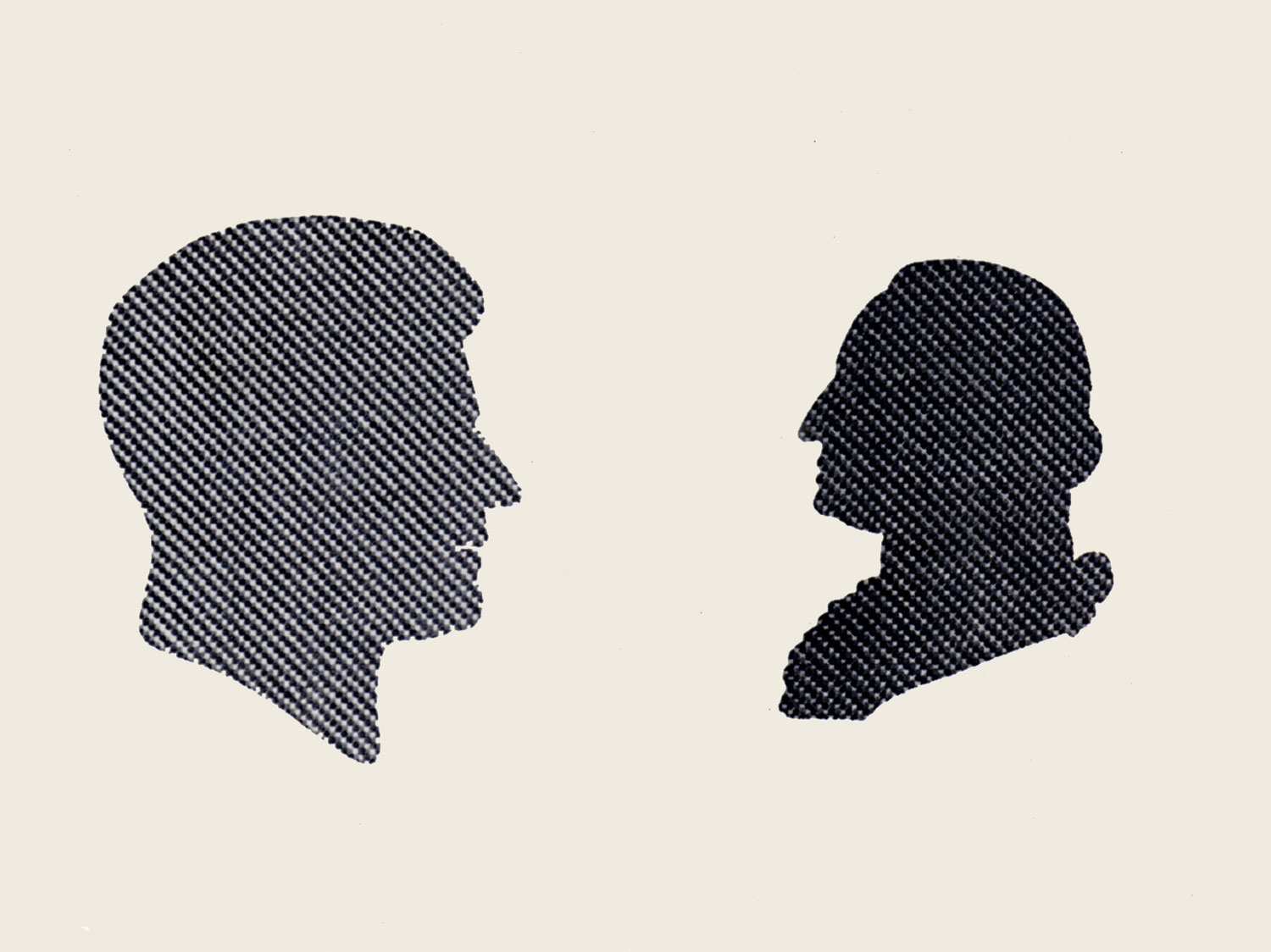
It’s time to think about Chris Burden. That’s right, the artist who in the ’70s garnered attention for such performances as Shoot (1971), in which he was shot in the arm, and Trans-fixed (1974), which featured the artist crucified on the roof of a Volkswagen Beetle. His art was one of intrigue, spectacle and perseverance. At a time when artists were delving deeper into the physicality of the body in space, Burden was the leader of the pack. Inherently sculptural and viscerally disconcerting to viewers, his early works can be considered a denial or rejection of the self.
In later years, the artist moved away from using his own body, instead incorporating industrial materials into large-scale works. This unexpected transition deemphasized the element of danger that defined previous works in favor of monumental scale. In place of his own anatomy, Burden, still faithful to his own interests, now uses steel, aluminum, wood and concrete. Many of these materials are combined with readymade objects in such works as Porsche with Meteorite (2013), Ghost Ship (2005) and 1 Ton Crane Truck (2009). The masculinity projected by these works is as playful as it is aggressive. What the years have transposed and extracted, however, is a deeply comprehensive exploration of space and an engagement with the real versus the spiritual.
Beam Drop (1984) is an installational performance, now shown in video format. The sculpture has been remade three times, Beam Drop Inhotim (2008) and Beam Drop Antwerp (2009) being the most recent versions. For each installation, Burden had steel beams lifted and dropped by a large crane into a designated area filled with cement. The piece, for a moment, is alive, as the concrete fluidly accepts the beams, bearing a promise of malleability that will soon be frozen. The penetration of the beams into the cement is not unlike the bullet being shot at close range into Burden’s arm by his assistant in 1971. There is a randomness that also carries an element of rehearsal.
“Extreme Measures” is Burden’s first major solo exhibition in an American museum in over twenty-five years. The exhibition’s organizers have shied away from the Chris Burden of the past and instead given us a presentation that delves deeper into the art historical nuances of his practice. Rather than present spectacle, we are granted a peek into the mind of a man who is as political as he is comedic and as practical as he is extravagant.

